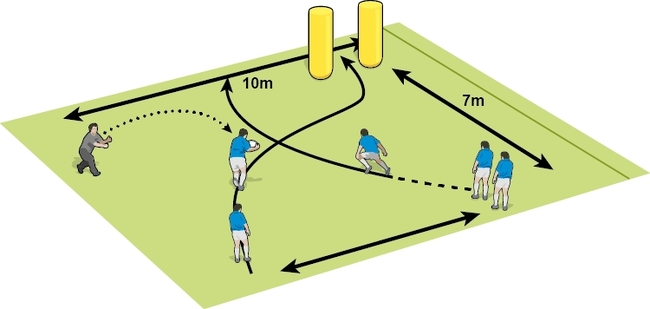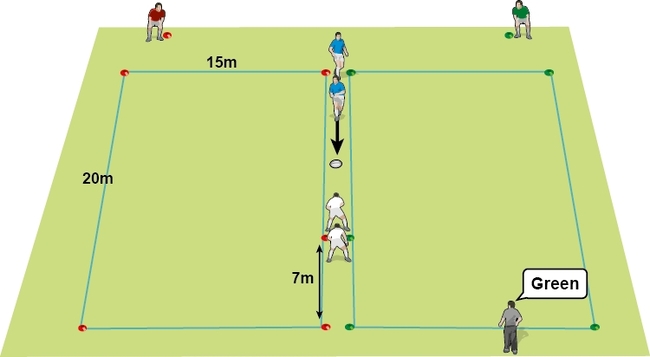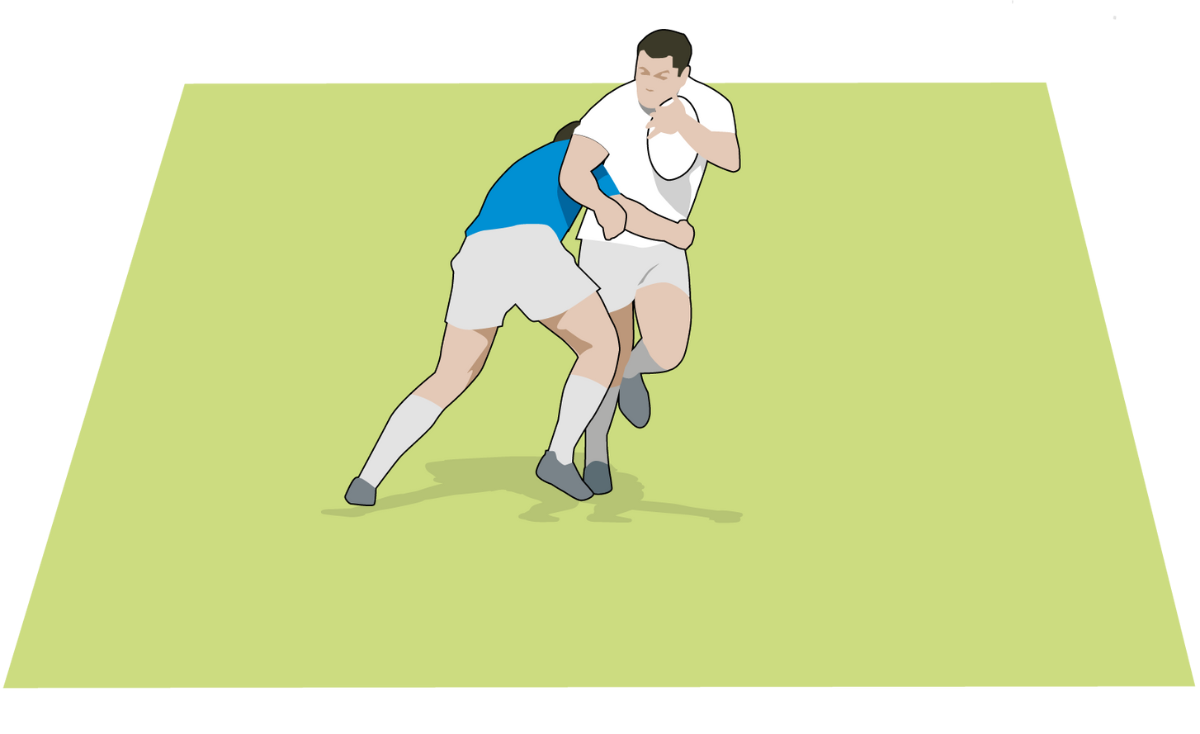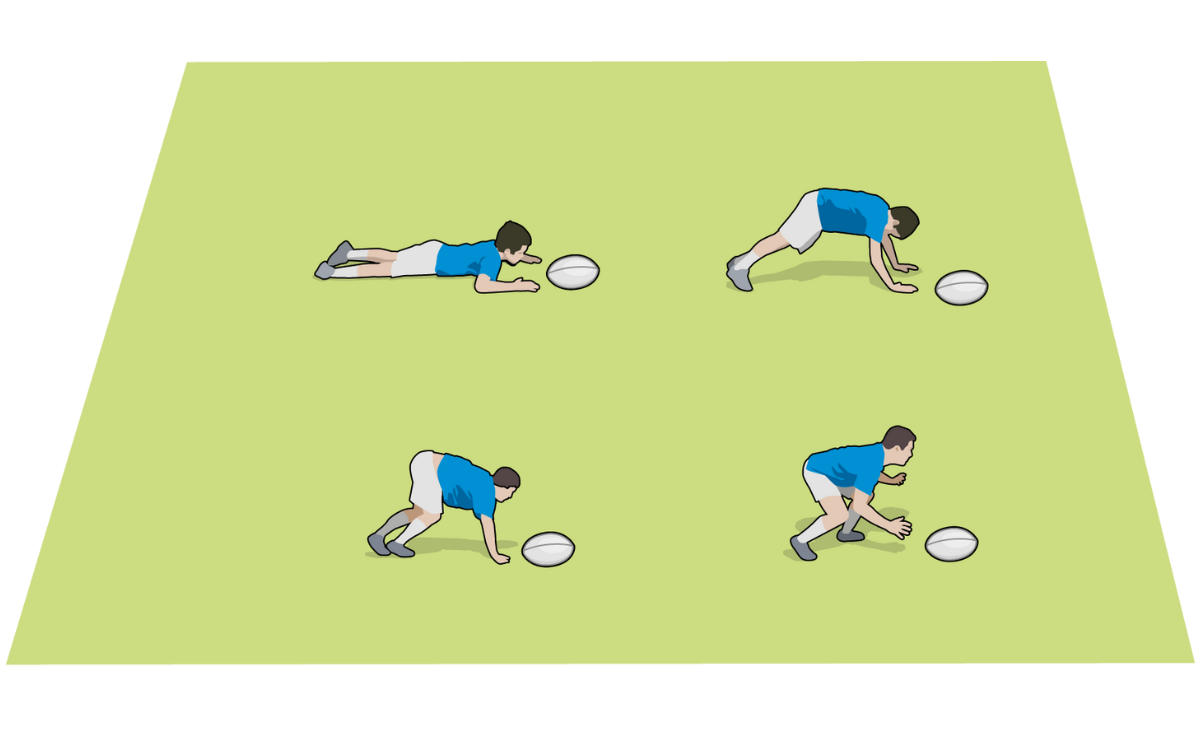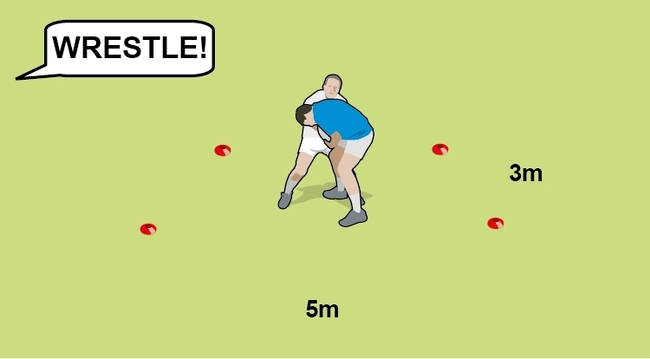Kick chase on target
Improve pressure applied on the kick receiver by helping players to understand their roles and responsibilities around their chase.
WHY USE IT
The kick chase requires the players to get themselves into an onside position and then into a line to prevent the attack making significant progress.
set up
40m x 60m playing area; a ball.
HOW TO PLAY
ACTIVITY: Put 10 players in one third of the area, spread at least 5m apart. They pass a ball among themselves. Every other pass must go backwards. Place three ‘counter attackers’ at the other end of the box. When you shout “Kick!”, the player with the ball kicks upfield. Their team-mates chase the kick while the other team gathers and runs back as far as they can without the ball carrier being touched twice. Restart if the kick goes out of play, but not if it goes behind the counter attackers.
DEVELOPMENT: Allow the counter attacking side to kick back. If they do, and the receiving team take more than three seconds to gather, they have successfully ‘breached’ the defence. Spread out the attackers more, so that some of them are into the opposition half of the box.
GAME SITUATION: Set up in a playing formation as in the middle illustration. Give the ball to one team, who kick it up field. Play with either full contact or two-handed touch.
COACHING POINTS
- Get into an onside position.
- Get into the chasing line and come up together.
Thank you for reading
to enjoy 3 free articles,
our weekly newsletter, and a free coaching e-book
Or if you are already a subscriber, login for full access
Newsletter Sign Up
Coaches Testimonials

Gerald Kearney, Downtown Las Vegas Soccer Club

Paul Butler, Florida, USA

Rick Shields, Springboro, USA

Tony Green, Pierrefonds Titans, Quebec, Canada
Subscribe Today
Be a more effective, more successful rugby coach
In a recent survey 89% of subscribers said Rugby Coach Weekly makes them more confident, 91% said Rugby Coach Weekly makes them a more effective coach and 93% said Rugby Coach Weekly makes them more inspired.
Get Weekly Inspiration
All the latest techniques and approaches
Rugby Coach Weekly offers proven and easy to use rugby drills, coaching sessions, practice plans, small-sided games, warm-ups, training tips and advice.
We've been at the cutting edge of rugby coaching since we launched in 2005, creating resources for the grassroots youth coach, following best practice from around the world and insights from the professional game.




